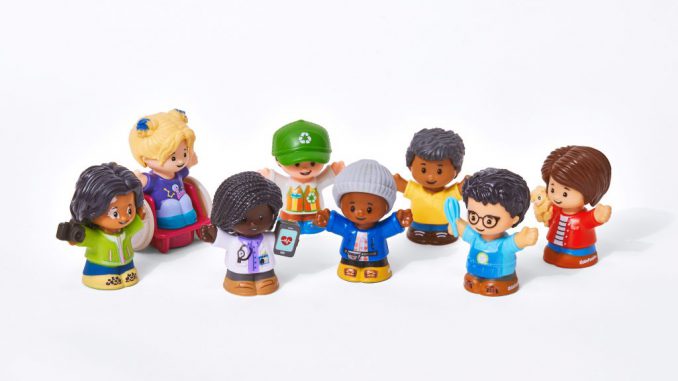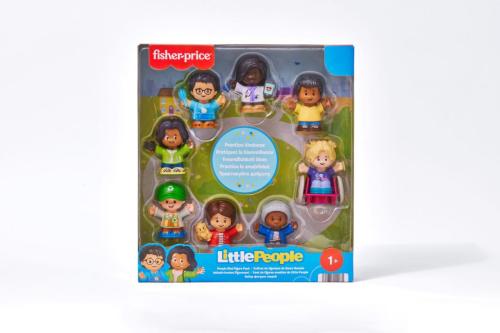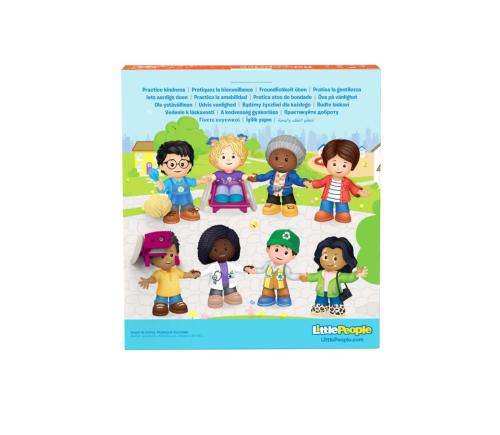
Leading toy manufacturer Fisher-Price has released a new inclusivity range featuring figurines with different ethnic backgrounds, physical disabilities, and skin conditions.
The infant, toddler, and preschool brand has created the limited-edition “People Kind” figure pack to be more representative of modern Britain.
A wheelchair user toy and another with the skin condition vitiligo have been created, alongside a toy which depicts a person with sight issues.
Different job roles have also been included in the pack, with a recycling collector, baker, photographer, doctor, and mother available.
A range of skin tones, genders, ages, and hairstyles are also on show.

“From a very early age, children start to notice similarities and differences all around them,” said Fisher-Price early childhood development expert, Lisa Lohiser.
“Since play is a foundation for early learning, toys such as Little People figures provide a developmentally appropriate opportunity for kids to notice the uniqueness of each figure – and to explore and appreciate those differences that are reflected within their community in a really fun way.”
It comes after a study of 1,000 parents with children aged 0-5 found more than half believed children’s toys should be more inclusive and representative of society.

Disability (39 percent), variety of work professions (33 percent), and different ethnicities (32 percent), were three areas where parents felt more could be done to increase inclusivity.
While 32 percent wanted different gender options and 16 percent wanted toys that showed a variety of ages.
And 59 percent want to see retailers stock toys on their shelves that are more inclusive and better representative of British society.
The study, carried out by OnePoll, found only 16 percent of parents felt there is a huge amount of inclusive toy options available to children.
When moms and dads had seen representative toys on shelves, 34 percent felt like they could have the power to tackle stereotypes in a way that children can understand.

One in three (36 percent) admitted they wished they had toys that were more representative of growing up, and 32 percent felt they can impact children positively.
But 31 percent felt toys have the power to also reinforce negative stereotypes.
Looking forward to the future, 60 percent felt the country will have moved away from stereotypes by the time their children have grown up.
More than half (58 percent) of parents also believe inclusivity should be added to the preschool curriculum – while 80 percent felt it was important for children to have access to inclusive toys.
“We hope to encourage a more accepting world through the power of play by helping toddlers recognize differences in people at a young age and lay the foundations for them to become more familiar with – and accepting of – the community around them,” said Kelly Philp, from at Fisher-Price UK.
“As a brand, we intend to continue our work to improve inclusivity across our toy collections and drive better representation.”
Produced in association with SWNS Talker.
Recommended from our partners
The post Fisher-Price Releases New Toys All About Inclusivity appeared first on Zenger News.
